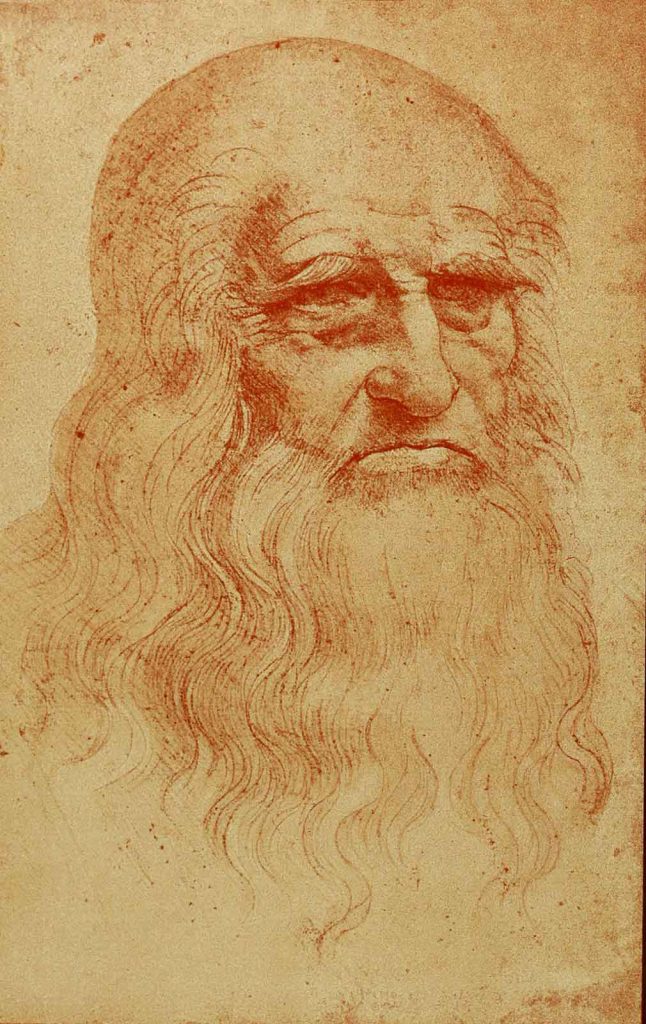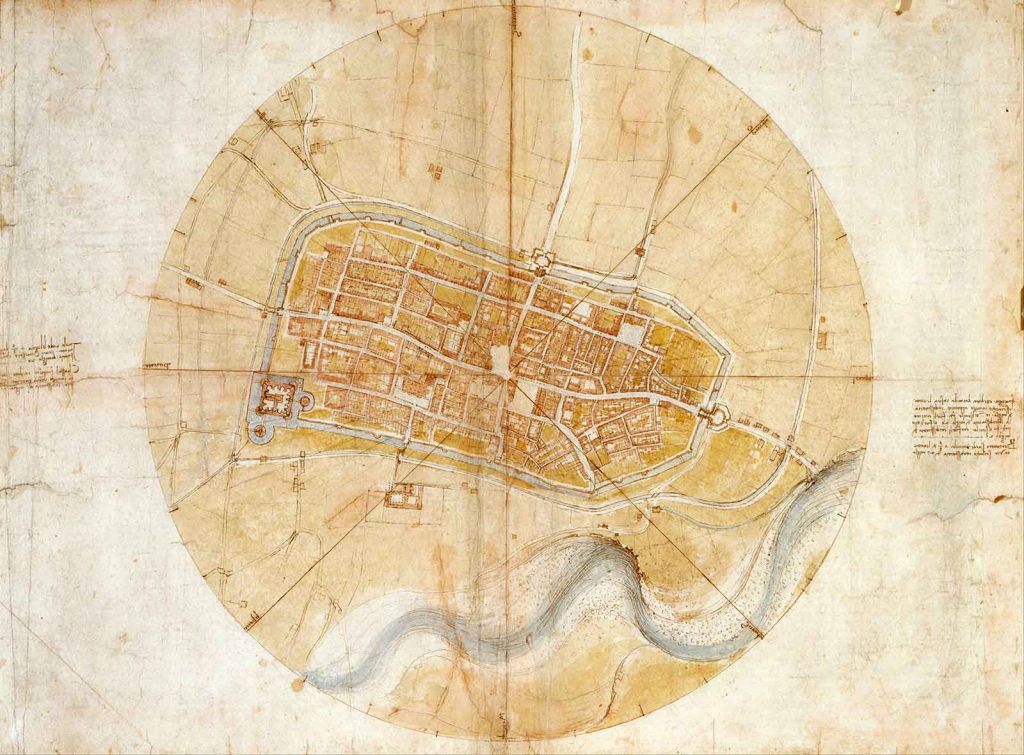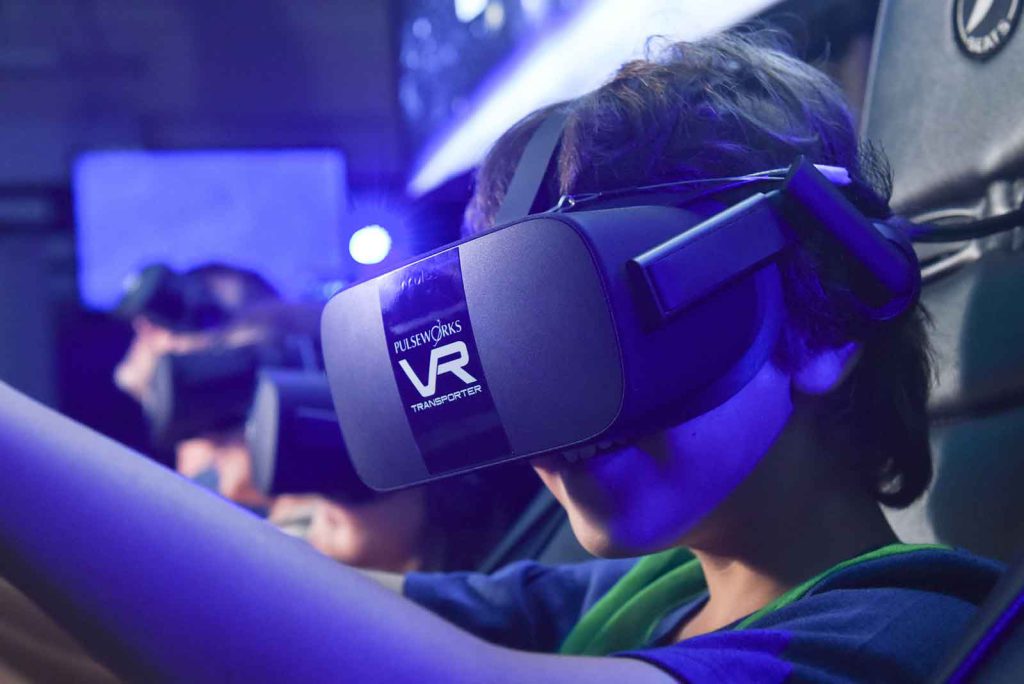What Would Leonardo da Vinci Think of the Future?
He sketched prototypes for a robot, a helicopter, a tank, and a submarine centuries before they were invented. He correctly proposed how the heart pumps blood and that some fossils he found were ancient oceanic creatures. He dissected bodies and studied optics to create the visual illusions on one of the world’s most famous paintings, the Mona Lisa. Leonardo da Vinci was a scientific genius, a masterful artist, and a technological wizard.
May 2, 2019, marks the 500th anniversary of the polymath’s death. This spring and summer, the Denver Museum of Nature & Science (DMNS), where I work, is hosting Leonardo da Vinci: 500 Years of Genius. As curator of the exhibition, I’ve spent a lot of time studying the man, his myriad achievements, and the scholarly and historical context in which he worked. Leonardo’s contributions are numerous and stunning—highly detailed anatomical drawings, amazing maps, sinister military machines, essential engineering devices, and remarkable theatrical props. And that’s before we mention the Mona Lisa, The Last Supper, or Vitruvian Man.
As a curator, I’ve worked on traveling exhibitions highlighting cultures, individuals, and discoveries from around the world, including Pompeii, Traveling the Silk Road, and Vikings. As an archaeologist, one of my favorite questions involves time travel: What would it be like to live in Pompeii? To travel along the Silk Road during its heyday? To see a hostile Viking ship approaching your village?
As satisfying as it is to learn about Renaissance Italy, however, I felt I was missing something obvious. And then it hit me. With Leonardo, a man so far ahead of his time, my favorite question was backward. Rather than wanting to travel back in time, I should instead be wondering what he would think if he were teleported forward in time to visit the museum in 2019. Before diving into that question, we need to gain more perspective on the essence of the man.
Leonardo had an intellectual wanderlust, microscopic observation skills, and an ability to synthesize art and science that few, if any, people in documented history can match. Like many of us, he kept to-do lists, but his lists included tasks few of us could imagine attempting. Let’s consider three examples.
“Measure Milan and its suburbs; draw Milan”
As an archaeologist, I have made dozens of maps. But I was never audacious enough to consider creating a bird’s-eye map of an entire city, especially when no one had done it before. In 1502, Leonardo made a beautiful plan-view map of the town of Imola, near Bologna, using only measurements he made on the ground. It’s a staggering accomplishment in the history of drafting. But Milan was not a town. It had a population of about 100,000 in 1500—roughly the same as Flint, Michigan, today. That’s a task of a totally different magnitude. And he thought it realistic enough to put on a to-do list.
“Learn how to square a circle”
“Squaring a circle” is a classical Greek problem meant to figure out how to create a square with the same area as a given circle using only a compass and a straightedge. If that sounds difficult, it is: Squaring a circle was proved impossible in 1882. The phrase is now an idiom for attempting the impossible. For Leonardo, it was just another entry on a to-do list. It was also the focus of a keen yet informally trained mind.
Leonardo was the “illegitimate” son of Ser Piero da Vinci, a prominent notary in Florence, and Caterina, a local woman of significantly lower social status. As such, Leonardo was not allowed to obtain an elite education at prestigious schools. He later attempted to teach himself Latin and Greek, but he never mastered them. Still, some biographers suggest Leonardo’s lack of formal schooling was an asset, as it spurred him to seek knowledge through investigation and experiment.
“Describe the tongue of the woodpecker”
Leonardo had an acute power of observation. He loved studying birds, and he questioned everything. (Author Michael White recently convincingly argued that Leonardo was the first scientist.) How many of us have wondered why woodpeckers don’t bash their brains in when going about their business? I certainly have. But I never sought to answer that question through empirical research. Leonardo did. We now know that a woodpecker’s tongue wraps around its inner skull, cushioning the brain against repeated blows.
These items on Leonardo’s to-do lists are not the hallucinations or musings of a madman. They are the serious goals of a really remarkable person from half a millennium ago. Which brings me back to my original question: What would Leonardo do during a time-traveling visit to my museum in 2019?
Leonardo would stand out as a flamboyant figure, striding through the museum with his long wavy hair and his short pink tunic. He would probably beeline to the Body Worlds–style hikers in the Expedition Health exhibition. These “plastinated humans,” similar to those found in the blockbuster exhibits that have traveled the world for the last two decades, have literally had their tissues replaced with plastic. One hiker is mostly bones; the other is mainly muscle, but other soft tissues, including the circulatory and nervous systems, are visible. Leonardo dissected more than 30 corpses—at night, by candlelight, in a crypt. The results of his illegal and secretive slicing were highly accurate and detailed drawings of human anatomy. Scholars, including White, have argued that these are his greatest and most lasting scholarly and artistic contributions. Today Leonardo would marvel at these technologically advanced plastic bodies, brazenly displayed in public.
Leonardo would also be fascinated by modern virtual and augmented reality. He spent much of his career studying optics and developing focal point perspective (see The Last Supper) in order to make his art look more realistic. But he went a step further: He used optics to make his art seem alive. Leonardo learned that eyesight is sharpest at the center of the retina, in a tiny pit called the fovea. The area around the fovea is better at seeing shadows. This is why, when we stare at something straight on, we see fine details, but when we look at it askance, it becomes blurrier and shadier.
Leonardo capitalized on this scientific understanding when he painted the Mona Lisa. If you look directly at her lips, she seems somewhat reserved. But glance at her cheek or her eyes, and your outer retina picks up the shadows that extend upward from her mouth, and suddenly, she’s smiling at you. Biographer Walter Isaacson called this “interactive smile” the first example of virtual or augmented reality.
In DMNS’ new virtual reality arcade, Leonardo would be amazed by how computers surpass optical illusions, creating interactive realities beyond his imaginings. Given his obsession with the prospect of human flight, I am certain he would play Glider Island, in which the user virtually flies a glider along a landscape, attempting to steer it through targets. Leonardo’s flying machine design was never built, so this would be his first chance to experience something like the thrill of soaring through the sky. He’d probably be so excited he’d fill a whole new notebook with to-do lists.


































